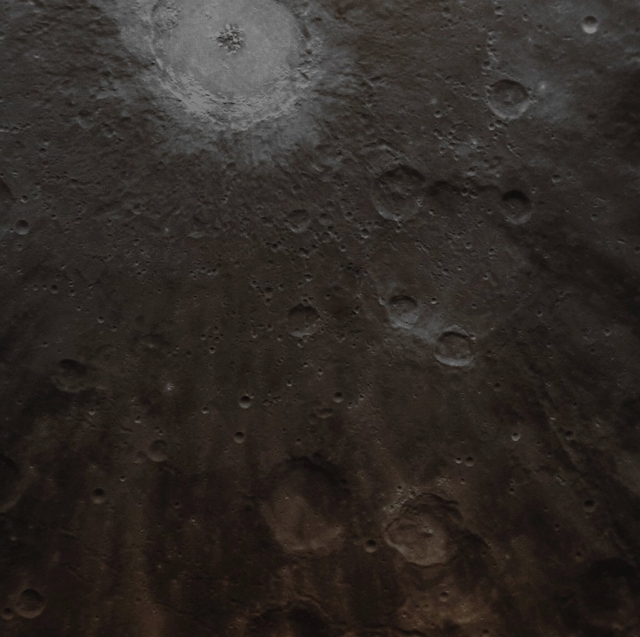
February 24, 2012
Credits: NASA/Johns Hopkins University Applied Physics Laboratory/Carnegie Institution of Washington and Dr Paolo C. Fienga/LXTT/IPF for the additional process. and color.
|
Bright Rays (which substantially are Linear Surface Discolorations and Alterations caused by the blast itself as well as by the material ejected from the Collision between the Impactor and the Surface of a given Celestial Body - here is the case of Mercury) and a large number of Secondary Craters (such as smaller Craters created by the fall of boulders, rocks and other debris - being all of those rocky fragments known as Ejecta - that were first lifted up and then thrown away as a consequence of the Primary Impact which generated the Primary Crater), spread across this NAC image and all radiate from Debussy Crater: a large Crater located in the Southern Latitudes of the Planet Mercury (Debussy here is the big Crater visible at the top of the frame). The image, acquired during the first orbit for which Mercury Dual Imaging System (MDIS) was operational, shows just a small portion of Debussy's large System of Rays, but in greater detail than ever previously seen. Images acquired during NASA - MESSENGER Spacecraft's second Mercury Fly-By showed that Debussy's Rays extend for hundreds of Kms across Mercury's Surface. Debussy Crater was named in March 2010, in honor of the French composer Claude Debussy (1862-1918). Date Acquired: March 29, 2011 This frame has been colorized in Absolute Natural Colors (such as the colors that a human eye would actually perceive if someone were onboard the NASA - MESSENGER Spacecraft and then looked down, towards the Surface of Mercury), by using an original technique created - and, in time, dramatically improved - by the Lunar Explorer Italia Team.
|
News visualized: 818 times

